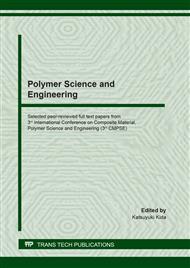p.59
p.66
p.72
p.78
p.84
p.89
p.95
p.101
p.109
Effect of Lamination Direction on the AE Behavior of 3D Printed Specimen during Tensile Testing
Abstract:
Additive manufacturing (AM) methods have become popular but the fracture mechanism of products made by AM is not well understood. In particular, the fracture of parts made by 3D printing needs more investigation. We have already investigated the effect of the lamination direction on the fractures in bearing specimens. In this study, we made some specimens by using a 3D printing method and performed some tensile tests. We investigated the effect of the lamination direction on the Young’s modulus of the specimens and tried to detect inner defect initiation using an acoustic emission (AE) sensor.
Info:
Periodical:
Pages:
84-88
Citation:
Online since:
August 2020
Authors:
Keywords:
Price:
Сopyright:
© 2020 Trans Tech Publications Ltd. All Rights Reserved
Share:
Citation:


